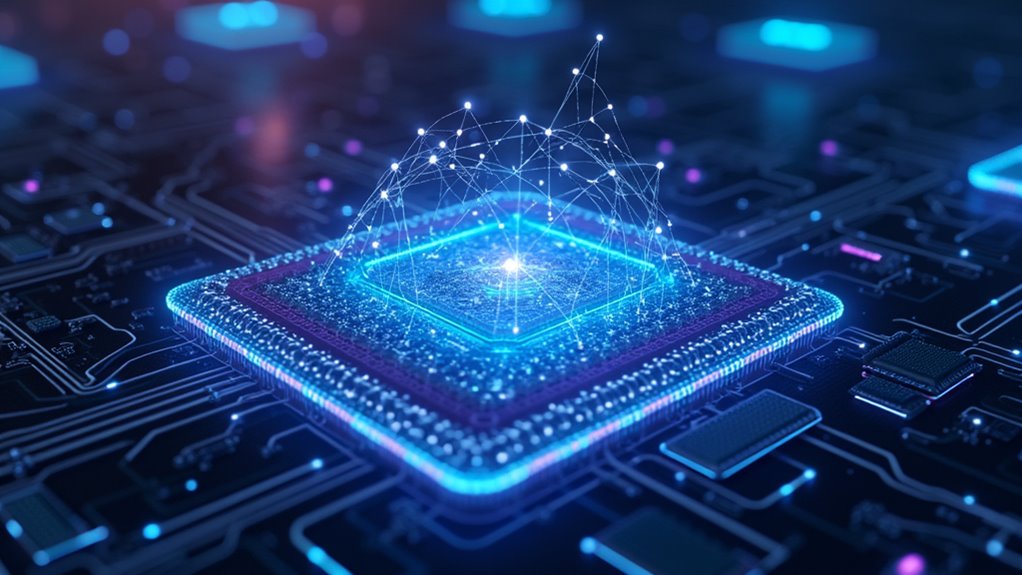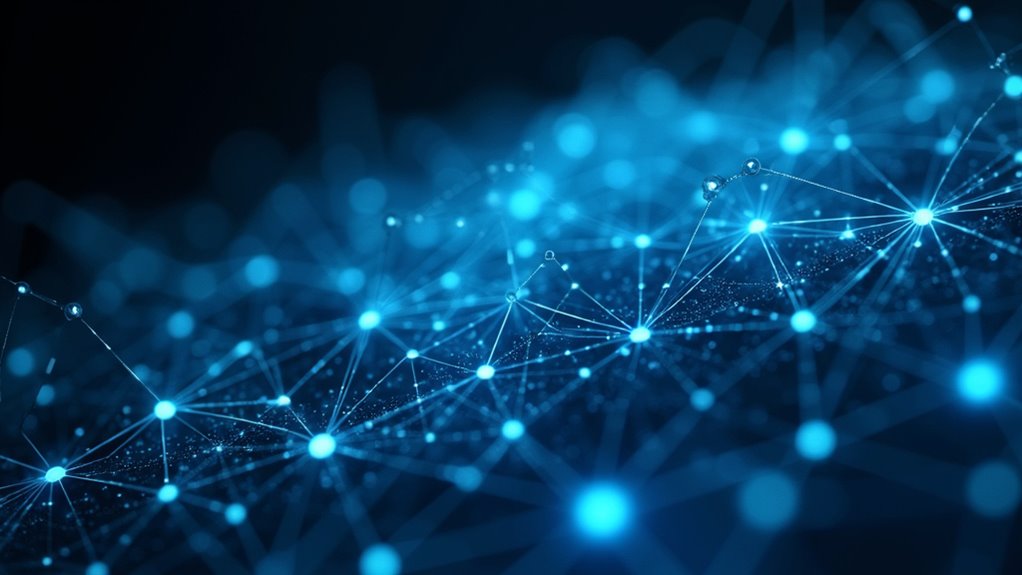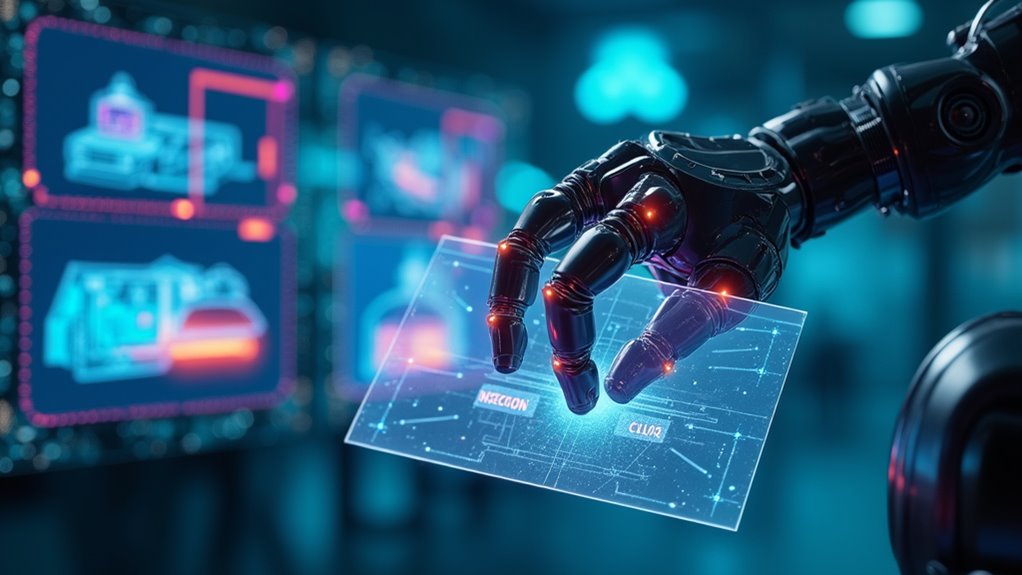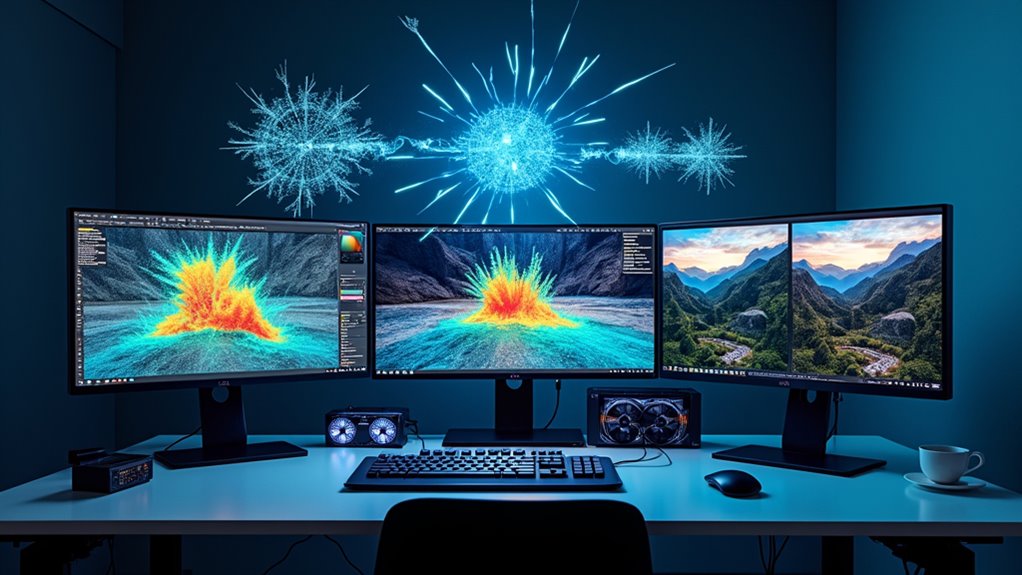AI works by processing massive amounts of data through algorithms that identify patterns and make predictions. Think of it as a digital brain—without the consciousness or emotions. Neural networks, inspired by human brain structures, form the backbone of modern AI systems, allowing machines to “learn” over time. Your smartphone’s face recognition, Siri’s responses, and Netflix recommendations? All powered by narrow AI designed for specific tasks. The rabbit hole goes much deeper than most realize.

While many people imagine robots with human-like consciousness when they hear “artificial intelligence,” the reality of AI is both more mundane and more fascinating. AI is fundamentally technology that enables machines to simulate human intelligence, performing tasks that typically require human cognition. These systems don’t possess consciousness or emotions—they’re sophisticated tools designed to automate work and solve problems efficiently.
At its core, AI operates through data processing and machine learning. The journey begins with massive data collection—text, images, audio, you name it. This data isn’t just sitting around looking pretty; it’s the lifeblood of any AI system. Algorithms then analyze this information to identify patterns, much like how you might notice that your cat always meows at 6 PM (dinner time, obviously).
Machine learning allows these systems to improve over time without explicit programming. Yes, they’re learning, but not in the way your nephew learns the lyrics to annoying pop songs. The supervised learning approach requires human oversight, while unsupervised learning can operate independently without supervision. These models vary in complexity from simple classification systems to sophisticated transformer architectures that power today’s most advanced language models.
Neural networks, inspired by the human brain’s structure, form the backbone of many modern AI systems. These interconnected layers of nodes process information hierarchically, tackling increasingly complex patterns. Think of them as extremely dedicated employees who never ask for raises or complain about the office temperature.
AI applications surround us daily. When Siri understands your mumbled request for weather updates, that’s natural language processing at work. When your phone opens by recognizing your face (even with that questionable haircut), that’s computer vision.
Recommendation systems suggest movies you might enjoy based on your viewing history, while self-driving cars integrate sensor data to navigate roads autonomously.
AI comes in different flavors too. The systems we interact with daily are examples of narrow AI, designed for specific tasks. These Weak AI systems excel at their designated functions but cannot transfer knowledge to other domains. General AI—the kind that could theoretically handle any intellectual task like humans—remains theoretical. For now, our digital assistants will stick to weather forecasts rather than philosophical debates about consciousness.
Frequently Asked Questions
Will AI Replace Human Jobs Completely?
AI won’t completely replace human jobs, though job automation will certainly transform many industries.
While up to 300 million positions could disappear, especially in manufacturing and customer service, AI typically replaces specific tasks rather than entire careers.
Workforce adaptation will be essential—humans will need to pivot to roles requiring creativity, emotional intelligence, and complex decision-making.
The future isn’t about elimination but evolution: jobs will change, requiring workers to develop new skills alongside AI systems.
Can AI Develop Consciousness or Emotions?
Current AI lacks consciousness despite advanced machine learning capabilities.
While systems can simulate emotional intelligence by recognizing and responding to human emotions, they don’t actually feel anything.
Think of it as sophisticated mimicry, not genuine experience.
Could AI eventually develop consciousness? Theoretically possible, but researchers haven’t cracked the code on consciousness itself yet.
The gap between algorithmic responses and subjective experience remains vast—AI reacts to patterns, but doesn’t experience disappointment when you close your laptop.
How Secure Is My Data When Used by AI?
Data privacy when using AI? It depends on the security protocols in place.
Companies should implement encryption, access controls, and anonymization—but many don’t. Your personal information might be vulnerable to breaches, adversarial attacks, or even model poisoning.
Remember, that “free” AI tool is analyzing your inputs somewhere! Regular audits and transparent data policies help, but nothing’s foolproof.
Always check privacy policies before sharing sensitive information with AI systems.
What Ethical Concerns Surround AI Development?
Ethical concerns in AI development revolve around several thorny issues.
Bias detection remains a critical challenge, as AI systems often mirror and amplify societal prejudices found in training data.
Algorithm transparency isn’t just a nice-to-have; it’s crucial for accountability. When companies deploy “black box” systems that affect lives, they’re fundamentally saying, “Trust us!” without showing their work.
Other concerns include privacy violations, job displacement, and the potential for autonomous systems to make harmful decisions without human oversight.
How Can I Prepare My Career for an Ai-Driven Future?
Preparing for an AI-driven future requires deliberate skill enhancement across technical and soft competencies.
Professionals should identify personal skill gaps, then pursue targeted training through online courses or formal education.
Industry adaptation means understanding how AI affects your specific field—not just generally.
Start learning programming basics, sharpen critical thinking abilities, and embrace continuous learning.
Remember, the goal isn’t becoming an AI expert, but rather positioning yourself where AI can’t easily replace you.
Adaptability trumps fear, folks.









